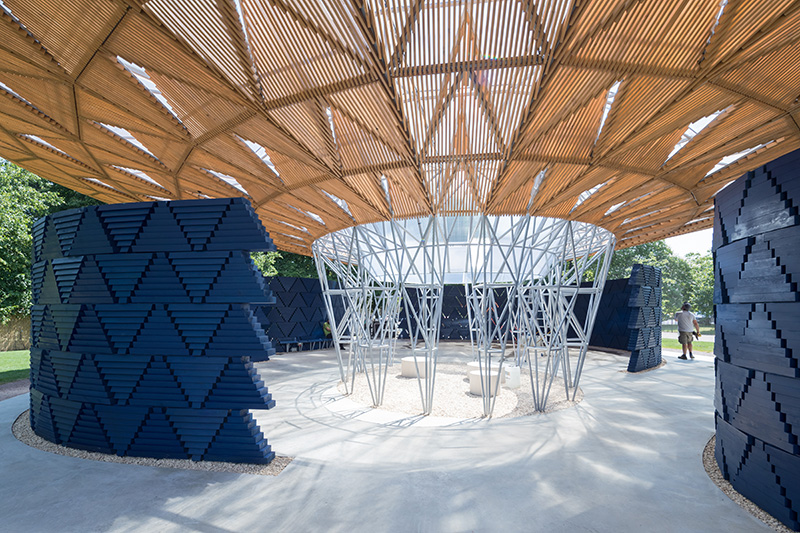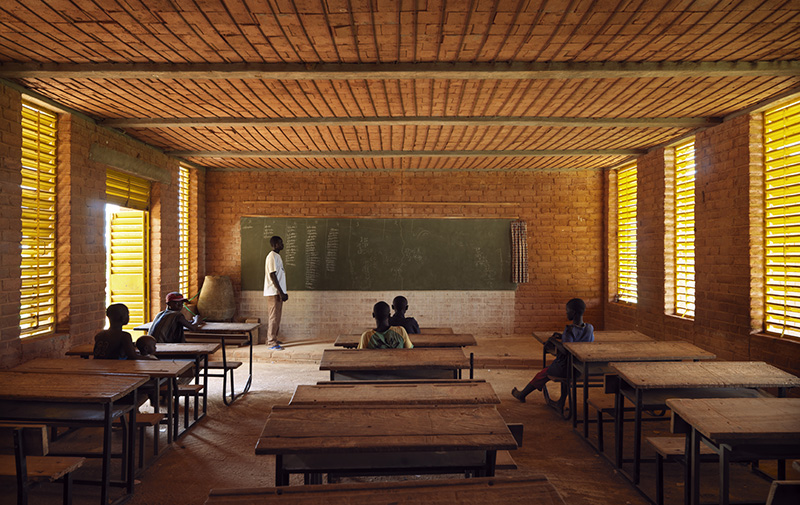ARCHITECTURE: Serpentine Pavilion 2017
 Diébédo Francis Kéré is the seventeenth architect that accepted the Serpentine Galleries’ invitation to design a temporary Pavilion in its grounds. Since its launch in 2000, this annual commission of an international architect to build his or her first structure in London at the time of invitation has become one of the most anticipated events in the global Architectural calendar.
Diébédo Francis Kéré is the seventeenth architect that accepted the Serpentine Galleries’ invitation to design a temporary Pavilion in its grounds. Since its launch in 2000, this annual commission of an international architect to build his or her first structure in London at the time of invitation has become one of the most anticipated events in the global Architectural calendar.
By Dimitris Lempesis
Photo: Serpentine Galleries Archive
Inspired by the tree that serves as a central meeting point for life in his home town of Gando, Francis Kéré has designed a Pavilion that seeks to connect its visitors to nature and each other. An expansive roof, supported by a central steel framework, mimics a tree’s canopy, allowing air to circulate freely while offering shelter against London rain and summer heat.“ In Burkina Faso, the tree is a place where people gather together, where everyday activities play out under the shade of its branches”. The Pavilion has four separate entry points with an open air courtyard in the centre, where visitors can sit and relax during sunny days. In the case of rain, an oculus funnels any water that collects on the roof into a spectacular waterfall effect, before it is evacuated through a drainage system in the floor for later use in irrigating the park. Both the roof and wall system are made from wood. By day, they act as solar shading, creating pools of dappled shadows. By night, the walls become a source of illumination as small perforations twinkle with the movement and activity from inside. Kéré was born in 1965 in the village of Gando, a place with no running water or electricity, in Burkina Faso. His face is still ringed with tribal scars in a pattern of spokes, marking him out as the son of the village chief, a position of privilege that gave him the rare chance to attend high school in the city. At 18, he won a scholarship to study woodwork in Germany, but, realising there was not much use for carpentry in a country that has little wood, he switched to study architecture at the Technical University of Berlin. In his final year he designed a primary school for Gando and used his ample charisma and energy to raise enough money to see it built. The project was the first test of what would become his characteristic style of rural hi-tech: a pair of simple rectangular volumes made of mud bricks, crowned with a “flying roof” of vaulted corrugated metal. It won the Aga Khan award for architecture in 2004 and has since been expanded with a library, secondary school, teachers’ housing and a community center. Based in Berlin, where he runs Kéré Architecture, a practice of 12 people, Kéré now uses commissions in Europe to continue the work back home. One of his most ambitious ongoing projects is the construction of an “opera village” in Laongo, near Ouagadougou, a world-class performance venue initiated by the late German theatre director Christoph Schlingensief, for which a school, clinic, art studios and a dozen homes have so far been built.
Info: Serpentine Pavilion 2017, Kensington Gardens, London, Duration 23/6-8/10/17, Design: Diébédo Francis Kéré, Technical advisor: David Glover, Engineering and all technical services: AECOM, www.serpentinegalleries.org








